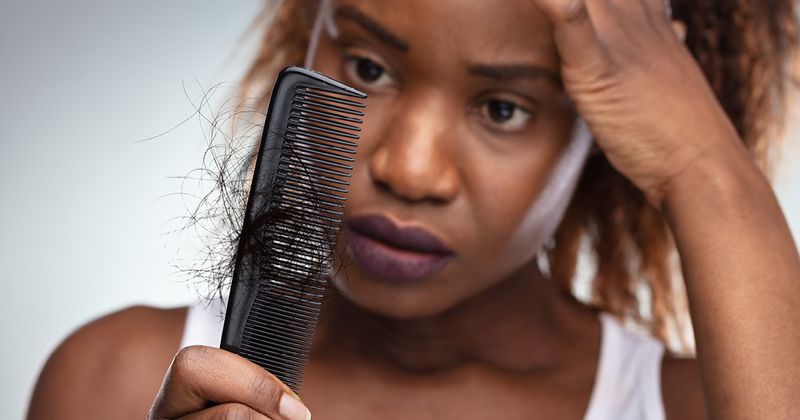September 10, 2023
3 min read
Source/Disclosures
Published by:
Healio Interviews
Disclosures:
Aguh reports no relevant financial disclosures.
Key takeaways:
- Women who wear hijab are among the highest risk for developing traction alopecia.
- Physicians should not make assumptions about whether women who wear hijab are concerned about their hair and scalp.
Women who wear hijab are among the highest risk for developing traction alopecia, yet they are likely underrepresented in alopecia studies, according to a letter in Journal of the American Academy of Dermatology.
This is likely due to physicians and researchers assuming women who wear hijab are not worried about hair and scalp issues, Crystal Aguh, MD, associate professor of dermatology and director of the ethnic skin program and ethnic skin fellowship at Johns Hopkins School of Medicine, told Healio.

Nearly half of Muslim women in the United States report wearing hijab, Aguh and colleagues wrote in their letter, yet physicians receive very little education about the styling practices of those who wear hijab and how those practices can affect the scalp. Healio interviewed Aguh about how dermatologists can overcome misconceptions and improve the patient experience for women who wear hijab.


Crystal Aguh
Healio: What barriers exist for women who wear hijab when seeking care for their hair or scalp?
Aguh: Very few physicians understand the nuances of hair and scalp disease, especially in women who wear hijab. Many physicians may feel uncomfortable asking patients whether they have any concerns with their scalp, and they may perform very limited examinations. These poor experiences can prevent women from returning to a dermatologist, even if their issue worsens.
Healio: How do these barriers affect research studies?
Aguh: Researchers may incorrectly assume that women who wear hijab are not worried about issues such as alopecia. For many of us who perform clinical research, we recruit participants by asking patients if they would be interested in participating in a study. If we assume that someone who is wearing a hijab is not concerned about hair or scalp issues or is not interested in participating in a research study, we may be missing a demographic and instead recruiting a sample population that is not representative of the entire population of patients we are seeing.
Healio: Are there any skin conditions that can be caused by or exacerbated by wearing a hijab?
Aguh: Women wearing hijab are among the women at highest risk for developing traction alopecia, the other being Black women. This is a condition in which women can experience thinning along their frontal hairline and is directly related to prolonged periods of tension along the hairline. In the case of women wearing hijab, this can occur from a combination of tying the hair back tightly followed by placing the hijab tightly across the hairline.
Healio: How can dermatologists help women who wear hijab feel more comfortable during a hair exam?
Aguh: I encourage dermatologists to allow the patient to lead during a hair exam. Questions such as, “Would you mind showing me which area of your scalp bothers you the most?” can help center the patient’s feelings about their medical issue. Additionally, dermatologists should work with the patient to establish goals. For example, if the patient intends to continue wearing tight hairstyles under her hijab, ask whether she would be open to trying other methods of tying her hair back such as tying it in in low bun or allowing it to dry completely before covering it with a hijab to minimize tension.
Healio: How much education do physicians receive about this topic? How can that education be improved?
Aguh: We receive little to no education about the styling practices of those wearing hijab. I have previously co-authored a textbook entitled Fundamentals of Ethnic Hair: A Dermatologist’s Perspective, and in the book we address different hair practices common among people of a variety of cultures. We made note to emphasize these different cultural practices because they are not well known in the standard curriculum, even though they lead to medical disease.
Our specialty as a whole clearly has to do more to improve education and access for patients of all racial and ethnic backgrounds. It is my hope that 5 or 10 years from now every dermatologist will be well versed in these common hair practices.
Reference:
This post was originally published on this site be sure to check out more of their content.








